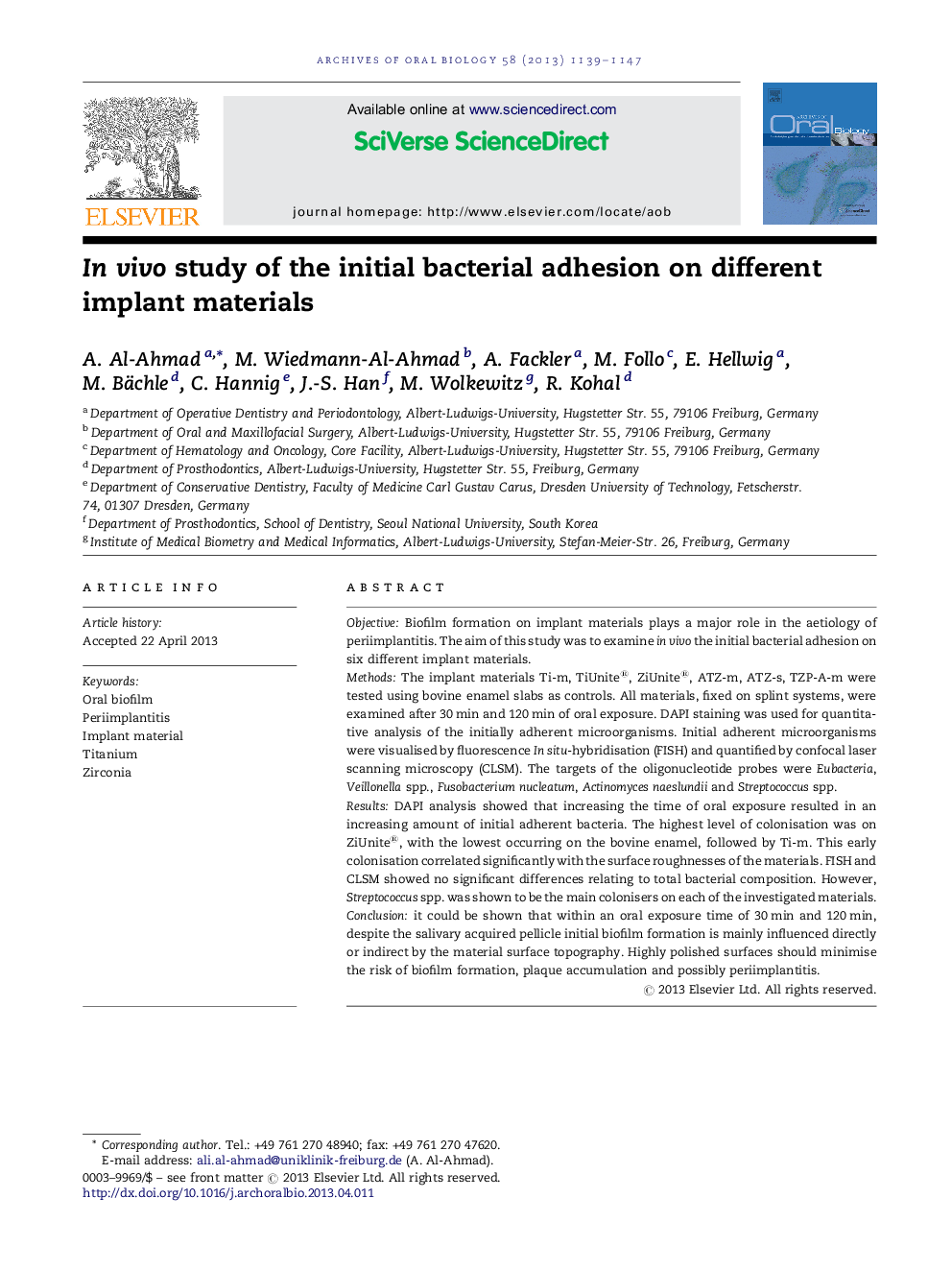| Article ID | Journal | Published Year | Pages | File Type |
|---|---|---|---|---|
| 6051413 | Archives of Oral Biology | 2013 | 9 Pages |
ObjectiveBiofilm formation on implant materials plays a major role in the aetiology of periimplantitis. The aim of this study was to examine in vivo the initial bacterial adhesion on six different implant materials.MethodsThe implant materials Ti-m, TiUnite®, ZiUnite®, ATZ-m, ATZ-s, TZP-A-m were tested using bovine enamel slabs as controls. All materials, fixed on splint systems, were examined after 30Â min and 120Â min of oral exposure. DAPI staining was used for quantitative analysis of the initially adherent microorganisms. Initial adherent microorganisms were visualised by fluorescence In situ-hybridisation (FISH) and quantified by confocal laser scanning microscopy (CLSM). The targets of the oligonucleotide probes were Eubacteria, Veillonella spp., Fusobacterium nucleatum, Actinomyces naeslundii and Streptococcus spp.ResultsDAPI analysis showed that increasing the time of oral exposure resulted in an increasing amount of initial adherent bacteria. The highest level of colonisation was on ZiUnite®, with the lowest occurring on the bovine enamel, followed by Ti-m. This early colonisation correlated significantly with the surface roughnesses of the materials. FISH and CLSM showed no significant differences relating to total bacterial composition. However, Streptococcus spp. was shown to be the main colonisers on each of the investigated materials.Conclusionit could be shown that within an oral exposure time of 30Â min and 120Â min, despite the salivary acquired pellicle initial biofilm formation is mainly influenced directly or indirect by the material surface topography. Highly polished surfaces should minimise the risk of biofilm formation, plaque accumulation and possibly periimplantitis.
